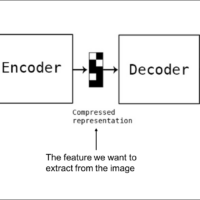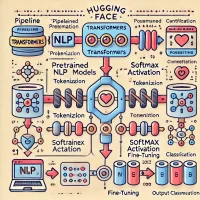Mastering Gradient Descent in Machine Learning Mastering Gradient Descent: A Comprehensive Guide to Optimizing Machine Learning ModelsGradient Descent is a foundational optimization algorithm used in machine learning to minimize a model’s cost function, typically Mean Squared Error (MSE) in linear regression. By iteratively adjusting the model’s parameters (weights), Gradient Descent seeks to find the optimal values that reduce the prediction error. What is Gradient Descent?Gradient Descent works by calculating the gradient (slope) of the cost function with respect to each parameter and moving in the direction opposite to the gradient. This process is repeated until the algorithm converges to a minimum point, ideally the global minimum, where the cost function is minimized. Types of Learning Rates in Gradient Descent: Too Small Learning Rate Slow Convergence: A very small learning rate makes the algorithm take tiny steps toward the minimum, resulting in a long training process. High Precision: Useful when fine adjustments are needed to avoid overshooting the minimum, but impractical for large-scale problems due to time inefficiency. Too Large Learning Rate Risk of Divergence: A large learning rate can cause the algorithm to overshoot the minimum, leading to oscillations or divergence where the cost function increases instead of decreases. Fast Exploration: While it speeds up the training process initially, it often leads to instability and failure to converge to the optimal solution. Optimal Learning Rate Balanced Approach: Strikes a balance between speed and precision, enabling efficient convergence without overshooting. Adaptive Techniques: Often found using methods like learning rate schedules or adaptive optimizers (e.g., Adam, RMSprop) that adjust the learning rate dynamically based on the training progress to achieve the best results. How to Find the Optimal Learning Rate: Experimentation: Start with a small learning rate and gradually increase it, monitoring the cost function to see how quickly and stably it converges. Visualization: Plotting the cost function against the number of iterations can help identify the rate at which the function decreases most efficiently. Learning Rate Schedulers: Use algorithms that automatically adjust the learning rate during training to find and maintain the optimal rate. By mastering the use of Gradient Descent and understanding the impact of different learning rates, you can significantly enhance the performance and accuracy of your machine learning models. For an in-depth guide and practical examples, check our detailed example of gradient decent and mathemathics behind it below, it has even visualising for better understanding Gradient Descent in Machine Learning, new Post about gradient decent comes soon too. IntroductionQuestion: How can we find the optimal parameters (weights) of a linear regression model to minimize the error between the predicted values and the actual values using gradient descent? Purpose: The purpose of using gradient descent in linear regression is to iteratively adjust the parameters to minimize the cost function, thereby reducing the prediction error and improving the model’s accuracy. Problem SetupConsider a simple dataset: x (Input Feature) y (Actual Output) 1 1 2 2 3 3 We are trying to fit a line through these points using the linear regression model: \[ h_\theta(x) = \theta_0 + \theta_1 x \] Cost FunctionThe cost function (Mean Squared Error, MSE) is: \[ J(\theta_0, \theta_1) = \frac{1}{2m} \sum_{i=1}^{m} (h_\theta(x^{(i)}) – y^{(i)})^2 \] Where: \( m \) is the number of training examples. \( h_\theta(x^{(i)}) \) is the prediction. \( y^{(i)} \) is the actual value. Gradient Descent AlgorithmThe update rule: \[ \theta_j := \theta_j – \alpha \frac{\partial J}{\partial \theta_j} \] Partial derivatives: \[ \frac{\partial J}{\partial \theta_0} = \frac{1}{m} \sum_{i=1}^{m} (h_\theta(x^{(i)}) – y^{(i)}) \] \[ \frac{\partial J}{\partial \theta_1} = \frac{1}{m} \sum_{i=1}^{m} ((h_\theta(x^{(i)}) – y^{(i)}) x^{(i)}) \] Initial Parameters and Learning Rate ScenariosInitial parameters: \(\theta_0 = 0\), \(\theta_1 = 0\) Learning rates: Too Small: \(\alpha = 0.001\) Too Large: \(\alpha = 1.0\) Optimal: \(\alpha = 0.1\) First Iteration Calculations Initial StepInitial values: \(\theta_0 = 0\), \(\theta_1 = 0\) Predictions and Errors for First IterationFor each \(x\) and \(y\) pair: \(x = 1\): \[ h_\theta(1) = \theta_0 + \theta_1 \cdot 1 = 0 + 0 \cdot 1 = 0 \] Error: \(0 – 1 = -1\) \(x = 2\): \[ h_\theta(2) = \theta_0 + \theta_1 \cdot 2 = 0 + 0 \cdot 2 = 0 \] Error: \(0 – 2 = -2\) \(x = 3\): \[ h_\theta(3) = \theta_0 + \theta_1 \cdot 3 = 0 + 0 \cdot 3 = 0 \] Error: \(0 – 3 = -3\) Calculate Gradients\[ \frac{\partial J}{\partial \theta_0} = \frac{1}{3} \left[(-1) + (-2) + (-3)\right] = \frac{1}{3} \cdot (-6) = -2 \] \[ \frac{\partial J}{\partial \theta_1} = \frac{1}{3} \left[(-1) \cdot 1 + (-2) \cdot 2 + (-3) \cdot 3\right] = \frac{1}{3} \left(-1 – 4 – 9\right) = \frac{1}{3} \left(-14\right) = -4.67 \] Update ParametersToo Small Learning Rate (\(\alpha = 0.001\)) \[ \theta_0 := 0 – 0.001 \cdot (-2) = 0 + 0.002 = 0.002 \] \[ \theta_1 := 0 – 0.001 \cdot (-4.67) = 0 + 0.00467 = 0.00467 \] New parameters: \(\theta_0 = 0.002\), \(\theta_1 = 0.00467\) Too Large Learning Rate (\(\alpha = 1.0\)) \[ \theta_0 := 0 – 1.0 \cdot (-2) = 0 + 2 = 2 \] \[ \theta_1 := 0 – 1.0 \cdot (-4.67) = 0 + 4.67 = 4.67 \] New parameters: \(\theta_0 = 2\), \(\theta_1 = 4.67\) Optimal Learning Rate (\(\alpha = 0.1\)) \[ \theta_0 := 0 – 0.1 \cdot (-2) = 0 + 0.2 = 0.2 \] \[ \theta_1 := 0 – 0.1 \cdot (-4.67) = 0 + 0.467 = 0.467 \] New parameters: \(\theta_0 = 0.2\), \(\theta_1 = 0.467\) Second Iteration CalculationsUsing the new parameters from Iteration 1, we repeat the process. Predictions and Errors for Second IterationToo Small Learning Rate (\(\alpha = 0.001\)) For \(x = 1\): \[ h_\theta(1) = 0.002 + 0.00467 \cdot 1 = 0.00667 \] Error: \(0.00667 – 1 = -0.99333\) For \(x = 2\): \[ h_\theta(2) = 0.002 + 0.00467 \cdot 2 = 0.01134 \] Error: \(0.01134 – 2 = -1.98866\) For \(x = 3\): \[ h_\theta(3) = 0.002 + 0.00467 \cdot 3 = 0.01601 \] Error: \(0.01601 – 3 = -2.98399\] Calculate Gradients\[ \frac{\partial J}{\partial \theta_0} = \frac{1}{3} \left[(-0.99333) + (-1.98866) + (-2.98399)\right] = -1.98866 \] \[ \frac{\partial J}{\partial \theta_1} = \frac{1}{3} \left[(-0.99333 \cdot 1) + (-1.98866 \cdot 2) + (-2.98399 \cdot 3)\right] = -4.642 \] Update ParametersToo Small Learning Rate (\(\alpha = 0.001\)) \[ \theta_0 := 0.002 – 0.001 \cdot (-1.98866) = 0.002 + 0.00199 = 0.00399 \] \[ \theta_1 := 0.00467 – 0.001 \cdot (-4.642) = 0.00467 + 0.004642 = 0.009312 \] New parameters: \(\theta_0 = 0.00399\), \(\theta_1 = 0.009312\) Too Large Learning Rate (\(\alpha = 1.0\)) For \(x = 1\): \[ h_\theta(1) = 2 + 4.67 \cdot 1 = 6.67 \] Error: \(6.67…
Thank you for reading this post, don't forget to subscribe!


